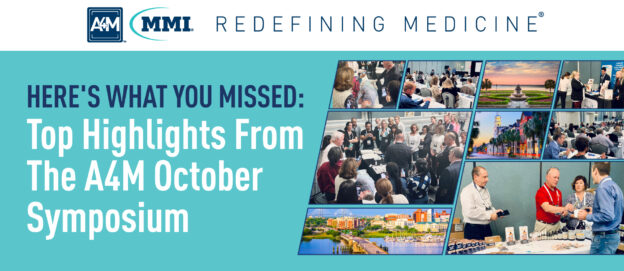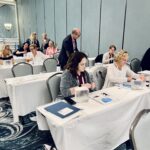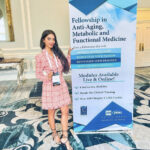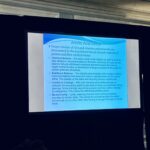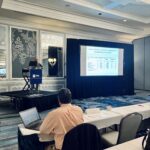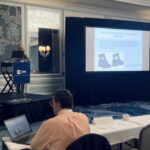We are pleased to announce that the A4M October Symposium in Charleston, South Carolina, was a resounding success. Held at the Charleston Place hotel between October 27-29, this three-day event drew in several hundreds of attendees from across the nation for an exciting weekend of innovative, immersive education. Nearly 40 educational sessions led by 18 renowned speakers engaged event participants with the latest research, expert insights, live demonstrations, and hands-on training. Covering intravenous (IV) and chelation therapy, pellet therapy, and longevity medicine, three different workshops delivered impactful takeaways, protocols, and practical strategies to implement directly into clinical practice.
In case you missed it or would like to revisit some of your favorite moments, we have compiled a selection of Symposium highlights in the recap below.
Pellet Therapy Protocols and Insertion Techniques
Founder of the integrative and regenerative medicine center Greenville Rejuvenation, Kenneth Orbeck, DO, FAARM, ABAARM, brought nearly 40 years of clinical expertise to the Pellet Therapy Workshop stage.
The workshop explored pellet therapy from every angle, from regulatory guidelines to comprehensive patient cases. Dr. Orbeck presented pellet therapy protocols and important clinical considerations specific to male and female patients during sessions on patient selection, evaluation, and dosing.
He answered the vital question, “Why is pellet therapy good for your practice?” emphasizing the benefits of incorporating pellet therapy into your medical practice, including the need for routine appointments and follow-ups, long-term patient oversight, and close monitoring.
Workshop participants witnessed not only several live patient demonstrations of pellet insertion techniques but also received hands-on training to help them master this critical skill. For the grand finale of the course, attendees practiced subcutaneous pellet insertion into ballistic gel molds – which mimic human tissue – under the guidance of Dr. Orbeck.
Intravenous NAD+ and the HITT Protocol for Addictive Disorders
During her session at the IV/Chelation Therapy Workshop, double board-certified integrative medicine specialist Deepa Verma, MD, shared her expertise on IV NAD+ for mitochondrial support, the HITT protocol, and addiction disorders.
Dr. Verma began with an overview of IV therapy best practices, the uses of NAD, and dosing guidelines. She explained the HITT protocol, which was developed to help detoxify the body, alleviate withdrawal symptoms, and quicken recovery.
Her lecture presented clinical evidence for the incredible benefits of neurotransmitter restoration therapy for the rapid mitigation of withdrawal symptoms and long-term sobriety promotion while stressing the importance of a team approach to recovering patients.
Metal Allergies, Environmental Exposures, and Toxicity
During her IV Therapy Workshop session, naturopathic medicine expert Lyn Patrick, ND, presented conditions related to allergic/sensitization reactions to metals and IV treatment approaches to environmental exposures, toxicity, and associated diseases.
Dr. Patrick discussed the effects of mercury exposure on lupus risk as reported by a cross-sectional study, as well as the numerous methods of exposure to toxic metals and their health implications. Providing tattoo ink, piercings, and PVC shoes as overlooked examples, she explored the hidden sources of heavy metals in consumer goods and the presentation of such toxicity in patient cases.
Further on in her lecture, Dr. Patrick evaluated IV therapies as effective treatments for toxicant-related conditions, highlighting the clinical benefits of magnesium and glutathione in particular.
Health Wearables and Their Clinical Applications
Nick Patel, the founder of the award-winning holistic wellness solutions provider Wellable, led a session titled “Wearables and Home Health Monitoring” to close Module VIII: Longevity Medicine and Bio-Hacking Strategies: Optimizing Lifespan.
During his lecture, Patel provided a comprehensive overview of the health wearable market, the functionality of available products, and their role in a clinical setting – all from a technologist’s perspective. He broke down the technological capabilities, failures, and data science applications of today’s wearables for clinical practitioners so that they could better understand how to use them in practice.
He debunked the “10,000 step myth” that claims an ideal step count is universally 10,000 steps, citing its origins as a marketing strategy used by a Japanese pedometer company before the 1964 Tokyo Olympics. Patel reviewed the current evidence that suggests ideal step count varies among individuals and that health benefits, such as reductions in all-cause mortality, increase alongside average daily step numbers up to a certain point.
Finally, Patel evaluated the accuracy of measurements provided by modern wearable devices and the viability of this data while presenting examples of top performers for use in a clinical setting. He reviewed the growth of the wearable device market and its impact on their prevalence and use in clinical interventions.
Pellet Compounding and Current Regulations
Board-certified sterile compounding pharmacist and drug formulation development consultant Anthony Campbell, PharmD, shared his professional insight with Pellet Therapy Workshop attendees. Beginning with an in-depth look into the requirements for pellet preparation to ensure potency and quality, he presented numerous factors that are considered during product analysis.
Campbell examined the environmental and personnel requirements for pharmaceutical compounding, including quality specifications and monitoring regulations. He explored Sections 503A and 503B requirements for quality control in the pharmaceutical compounding of sterile products and various methods for ensuring the sterilization of pellets for their safe and efficacious use.
Later in his session, Campbell presented a review of NASEM’s report on the safety, effectiveness, and use of compounded bio-identical hormone therapy (cBHT), which recommends the restriction of cBHT based on limited evidence. He underscored that only 13 studies – out of 16,000 – were included and that no pharmacist, compounder, or physician with cBHT experience was involved in the report.
Finally, Campbell presented vital considerations to ensure the safety and effectiveness of cBHT in the current regulatory environment, highlighting the urgent need for increased research and funding in this sector.
What’s Next?
With the year’s penultimate event complete, A4M prepares to host the largest anti-aging medicine conference the industry has ever seen: The 30th Annual World Congress: LongevityFest 2022. Whether you are a first-time A4M learner or a returning participant, this is an educational experience you cannot miss. Learn more and sign up to join us between December 9-11 in Las Vegas, NV, by clicking here.

